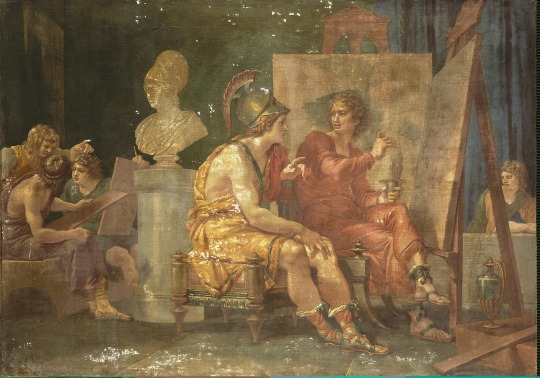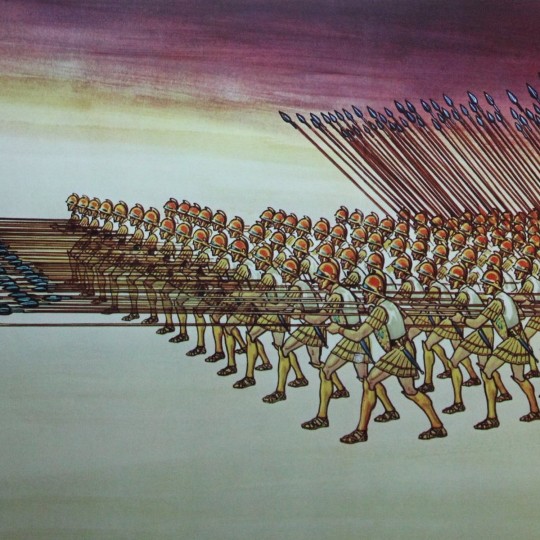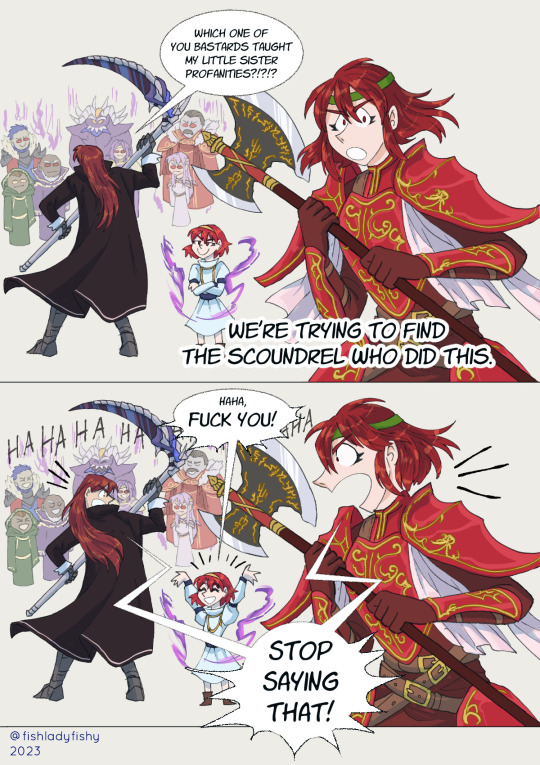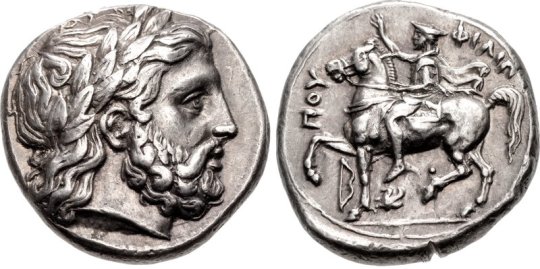#macedon
Text

Any ideas?
#historical memes#history#history memes#meme#memes#historical#ancient history#Ancient Greece#Greek history#Ancient Greek history#macedon#Macedonia#Alexander#Alexander the great#alexander of macedon#Hephaestion#Hephaestion and Alexander#there I told you#I fucking love them
229 notes
·
View notes
Text

Alexander the Great in the Workshop of Apelles by Giuseppe Cades
#alexander the great#apelles#art#giuseppe cades#ancient greece#painter#painting#ancient greek#history#alexander#macedonia#macedonian#macedon#greece#greek#sculptures#sculpture#europe#european#classical antiquity#neoclassical#neoclassicism#artist#mediterranean
76 notes
·
View notes
Photo

Pezhetairoi
The pezhetairoi (foot companions) were part of the imposing army that accompanied the Macedonian commander Alexander the Great (r. 336-323 BCE) when he crossed the Hellespont to face the Persian king Darius III in 334 BCE. Armed with long pikes (sarissas), the pezhetairoi fought in a Greek phalanx formation and played an important role in the battles of the Granicus, Issus, and Gaugamela.
Origin
Like with the hypaspist, the origin and evolution of the pezhetairos (plural: pezhetairoi) are shrouded in mystery. Except for references to them in discussions of Philip II and Alexander, the term pezhetairoi is hardly found in ancient literature. In his The Army of Alexander the Great, historian Stephen English wrote that, at some inexact point, the peasantry was recruited territorially and organized into infantry, and, according to the historian Anaximenes, it was given the name pezhetairoi. He added that the pezhetairoi were "essentially an evolution of the standard phalanx" (3).
However, disagreements still persist: some scholars refer to all of the Macedonian infantry as pezhetairoi while others believe they were not front-line infantry but bodyguards to the king. English contends that the pezhetairoi may have been created as a select, elite infantry acting as royal bodyguards under the Macedonian king Alexander I (498-454 BCE). It is claimed by some that this elite infantry eventually became the hypaspists. It was Alexander III (the Great) who would extend the term pezhetairoi to include all of the heavy phalanx infantry with the exception of the hypaspists.
Continue reading...
45 notes
·
View notes
Text

She won’t stop saying it, it’s getting out of hand! D:
#fire emblem#fire emblem heroes#fe maria#fe michalis#fe minerva#macedon#fe heroes#maria#michalis#fe#fallen Maria#Minerva#Maria fire emblem#feh
326 notes
·
View notes
Photo

"I fight so that Macedon will one day conquer the world. I will eliminate all who stand in my way."
Michalis from FE Shadow Dragon, c/mmissioned by @fishladyfishy!
#fire emblem#michalis#feh#feheroes#fe shadow dragon#fe mystery of the emblem#fe new mystery of the emblem#fe12#fe11#macedon#commissions#archanea
352 notes
·
View notes
Text

Recreating facial features of "Alexander the Macedonian" using the digital system according to the shape of his face in carved statues.
Alexander the Great died in the palace of King Nebuchadnezzar in Babylon in Iraq in 323 BC, when he was only 32 years old.
—
Alexander III of Macedon (20/21 July 356 BC – 10/11 June 323 BC), commonly known as Alexander the Great, was king of the ancient Greek kingdom of Macedon.
He succeeded his father Philip II to the throne in 336 BC at the age of 20.
He spent most of his ruling years conducting a lengthy military campaign throughout Western Asia and Egypt.
By the age of 30, he had created one of the largest empires in history, stretching from Greece to northwestern India.
He was undefeated in battle. He is widely considered to be one of history's greatest and most successful military commanders.
#Alexander the Great#Alexander III of Macedon#Alexander the Macedonian#Archaeo Histories#Macedon#Ancient Greece#Ancient Empires
48 notes
·
View notes
Text
The elite bodyguard of Alexander the Great is said to have killed a lion with his bare hands and this is how he gained Alexander’s attention. This man was Lysimachus and he eventually had a small empire of his own.
#Lysimachus#Macedonian#Macedon#Macedonia#Alexander the Great#general#Greek#elite bodyguard#The Battle of Hydaspes#thrace#Wars of the Diadochi#Ptolemy I#Cassander#Seleucus#Antigonus#Diadochi#ancient#history#ancient origins
60 notes
·
View notes
Text

Alexander entering Babylon
Charles Le Brun (1665)
"This vast canvas is part of a series of four commissioned by Louis XIV from Le Brun. It is a cartoon for a tapestry woven at the Gobelins manufactory in Paris.
Alexander, who had defeated Darius III of Persia at the Battle of Issus (333 BC), foresaw another battle to take Babylon; he was surprised to see the gates of the city open to give him a hero's welcome. Le Brun depicts the moment where Alexander, holding a scepter topped by Victory in his left hand, advances in a chariot drawn by two elephants captured from Darius' army. The hero, crowned with laurel leaves, is preceded by Persian trumpeters. Next to him three men directed by a mounted warrior (perhaps Hephaestion, Alexander's friend) carry a large golden vase. In the background one can see the Hanging Gardens of Babylon; in the foreground to the left, a statue of Semiramis.
Louis XIV was interested in the story of Alexander the Great because of his own special type of megalomania could see itself reflected in the Greek past. Le Brun accordingly executed the truly colossal series of four canvasses depicting episodes from the life of Alexander the Great.
This series was considered by the artist himself to be his masterpiece. The four paintings of the series are the Passage of the Granicus, the Battle of Argela, the Entry of Alexander into Babylon and Alexander and Porus. Like so many Herculean undertakings, the paintings impressed everybody by their sheer size. Later history has not been kind to them, but even so, tremendous energy burst out of every corner of these pictures, some of which are more than twelve metres long. The source, without any doubts, is Rubens. This is not the exuberant Rubens of the Medici cycle, but the Rubens of the vast hunting scenes and tapestry cartoons. Le Brun had in effect changed sides, as he moved from modest echoes of Poussin to a full-blown eulogy of Rubens."
Source: Wikipedia & Web Gallery of Art
Location: Musée du Louvre - Paris
#alexander#alexander the great#antiquity#archeology#macedon#greece#painting#archaeology#Charles Le Brun#babylon
5 notes
·
View notes
Text

Tetradrachm of Philip II of Macedon. On the obverse, the laureate head of Zeus (from whom the Argead dynasty of Macedon claimed descent via Heracles); on the reverse, Philip, on horseback and wearing the characteristic Macedonian flat hat known as the kausia. Artist unknown; minted at Amphipolis between 355 and 348 BCE. Photo credit: Classical Numismatic Group, Inc. http://www.cngcoins.com
#classics#tagamemnon#Ancient Greece#Macedon#Philip II of Macedon#Classical Greece#ancient history#Greek history#Ancient Greek history#art#art history#ancient art#Greek art#Ancient Greek art#Classical Greek art#Macedonian art#coins#ancient coins#Greek coins#Ancient Greek coins#Macedonian coins#numismatics#ancient numismatics#tetradrachm
69 notes
·
View notes
Photo

I cannot visit Macedon without stopping by this place. The Honour Avenue is considered one of the most scenic road in Autumn 🍁 it’s a memorial to honour those who fought or died in war, particularly World War I. Also, Macedon is one of the 547 known avenues of honour in Australia. A special way to pay tribute to the brave Aussie soldiers 🙌🏽 When traveling to Macedon, be mindful of that 🍂🧡 #autumn #macedon #australia #lifeofadventure #visitmacedonranges #seeaustralia (at Honour Avenue, Macedon) https://www.instagram.com/p/ChVekpXJjfB/?igshid=NGJjMDIxMWI=
61 notes
·
View notes
Text

Patreon
#studyblr#notes#history#historyblr#history notes#world history#world history notes#ancient greece#macedon#phalanx#royal hypaspists#alexander the great#classics#classical studies#classical history#classics studies#classics history#alexander of macedon#ancient greece notes#ancient society
6 notes
·
View notes
Text

Classic Alex
#historical memes#history#history memes#meme#memes#historical#ancient history#Ancient Greece#ancient Persia#Alexander#alexander the great#alexander iii of macedon#macedon#macedonia#alexander of macedon#gordian knot
14 notes
·
View notes
Text

The Battle of Pydna, 168 BC by Peter Connolly
#battle of pydna#art#ancient rome#peter connolly#rome#macedonia#macedon#roman#romans#macedonian#phalanx#pikes#antiquity#roman republic#third macedonian war#greece#history#macedonian wars#ancient greece#perseus#lucius paullus#lucius aemilius paullus#publius cornelius scipio nasica#mediterranean#europe#european
59 notes
·
View notes
Photo

Hephaestion
Hephaestion was a member of Alexander the Great's personal bodyguard and the Macedonian king's closest and lifelong friend and advisor. So much so, Hephaestion's death would bring the young king to tears. From 334 to 323 BCE Alexander the Great conquered much of the known world. He led his army on a ten-year odyssey across Asia Minor and into Persia, Egypt and India. Eventually, after his defeat of Darius III, he became the self-proclaimed King of Asia. Of course, he could not have done this without the support of his loyal army and staff of skilled officers – Ptolemy I, Perdiccas, and Craterus, but above all others, Hephaestion.
Early Life
The son of Amyntas, Hephaestion was raised in the Macedonian capital of Pella and according to most sources born in 356 BCE, the same year as the king. Being from an aristocratic family, as were many of the staff officers who would follow Alexander into Asia, he became a student, alongside Alexander, of the philosopher Aristotle at Mieza, a city west of Pella. His intelligence impressed the Athenian academic, and, like the king, they would correspond with each other during the long Persian campaign.
Hephaestion was considered handsome by many, and Alexander's father, Philip II of Macedon, regarded him as an excellent influence on his son. Shortly after Philip married Cleopatra, the future king became concerned about his position as successor. A disagreement erupted between Philip and Alexander, a dispute fueled by his friends. Because of this, many of Alexander's friends were sent into exile; however, because of Philip's respect for Hephaestion, he was spared this humiliation.
Continue reading...
46 notes
·
View notes
Text

She’s going through her edgy phase! 😱
#fire emblem#fe heroes#fe michalis#fe maria#fe minerva#fire emblem heroes#macedon#michalis#maria#fe#fallen units#fallen#fallen Maria#macedon siblings#new mystery of the emblem
286 notes
·
View notes
Text
Fire From Heaven by Mary Renault [A Review]
Even for an historical novelist of the calibre of Renault, Fire From Heaven is extremely ambitious. A coming-of-age tale of one of the most well-known and scrutinised figures in history, set in a period of his life we know little about
Even for an historical novelist of the calibre of Mary Renault, what she embarks on in Fire From Heaven is extremely ambitious. A coming-of-age tale of one of the most well-known and scrutinised figures in history, yet set in a period of his life we know very little about.
A boy, almost five years old is woken in the night by the feeling of something moving against his body. He looks down and…

View On WordPress
#Alexander the Great#Ancient Greece#Book Review#Booker Prize#Contemporary Literature#Historical Fiction#Macedon#Mary Renault#Novels
5 notes
·
View notes